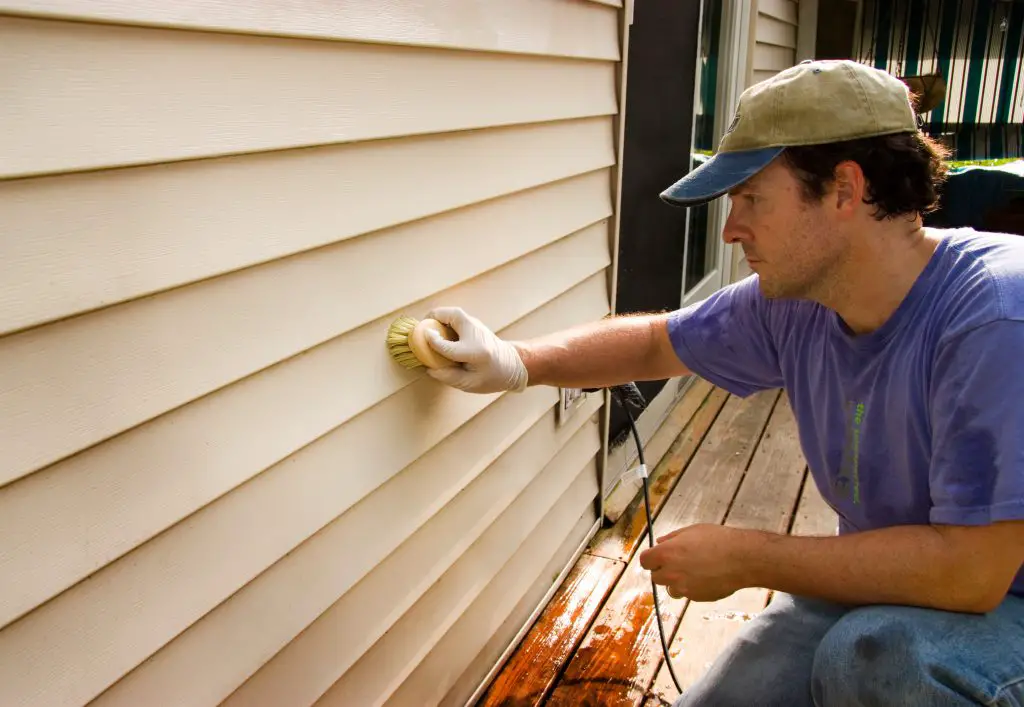While most homeowners invest significantly in the maintenance and condition of their homes indoors, it’s easy to forget that you need to do the same for exteriors if you want the best from your home. After all, having a well-conditioned and beautiful curb appeal can attract more buyers if you decide to resell. It also makes your home’s atmosphere brighter and more comfortable to live in. One vital component of your exterior is siding. If you’ve got vinyl siding, you have to know the right ways to maintain it. There’s more here than meets the eye when you’re dealing with vinyl.

Keeping vinyl siding in good shape doesn’t require much effort, but you do need to keep on top of things over time. Vinyl siding doesn’t rot, making it a better than wood in this way, but vinyl is also fragile and needs to be treated gently. Here are four better ways to maintain your vinyl siding:
Avoid Using Harsh Cleaning Chemicals
Vinyl siding gets dirty, and since most vinyl is light in colour, it shows dirt in obvious ways. Dust, mold, cobwebs, dirt, mold and lichen needs to be removed your place will look terrible. As a result, the exterior of your home looks untidy and unattractive. The best way to resolve this is to clean your vinyl siding.
First, avoid harsh cleaners not made specifically for vinyl. The wrong stuff can discolor siding, dissolve waterproofing sealants, and speed decomposition. Use mild soap, dishwashing detergent or siding soap made specifically for the job. While other commercial cleaning products can pass as safe to use in vinyl, you need to check and test them first. Have you found areas of damage vinyl as you do your cleaning? If you’re notup to repairing this yourself, look for a vinyl siding contractor in your area. You’ll need to search for something like this link where you live: cost of siding replacement in Alexandria.
Inspect Your Siding
Another crucial step for vinyl siding maintenance is inspection. Vinyl is a safe material to use when it is intact, as it prevents insect infestation, water leaks, and structural damage. However, vinyl is also fragile, and cracks or holes that develop will let water into your walls internally, triggering mold growth and rot. You never want to live with damaged vinyl siding for very long. Eventually, water will seep through these cracks when you clean the surfaces with a pressure washer or garden hose. Molds can penetrate the cracks and affect your home’s structural condition.
Vinyl products typically more than 20 years old have broken areas or cracks due to brittleness. This is a natural occurrence, so it’s best to replace your vinyl siding when it has aged to the point of failure. Strong winds or rain can also cause vinyl siding to break, especially when it’s old.. Replacement is the only way to fix cracked or damaged siding panels. It is best to call a professional for broken panels and hole repair. It’s actually considerably trickier to repair vinyl siding than it is to install it.
To inspect your sidings, begin by looking out for signs of discoloration. This is often the first signs of weakness. Be careful as you look for cracks and holes. Cracks can let in a lot of water while also being hard to see.
Pressure Wash Your Sidings Correctly
A pressure washer allows vinyl siding to be cleaned effectively without scrubbing, but you need to the careful. Start with the nozzle that delivers the least amount of pressure to the siding, and keep the direction of sprayed water so it’s horizontal or pointing down. Upward flow of high pressure water will almost certainly get under the vinyl, potentially causing rot and mildew growth as internal materials get way too wet. Improper usage of a pressure washer can result in a surprising amount of vinyl siding damage in a short time. .

Power washing around openings in walls should be done with caution. When using a pressure washer, stay in front of your vinyl siding, as the spaces between the siding can hold water and develop water damage over time. It’s critical to stand well away from the siding until you see how much force the water delivers. The tip-off the pressure washer should move from the top down to avoid forcing water up and under the siding. If you’re not confident with the task of washing your siding, or you’re too lazy or busy to do it yourself, you can hire professional cleaning contractors to clean your vinyl sidings instead.
Dangers of Painting Your Siding
Some homeowners feel that painting their vinyl siding can contribute to a more beautiful aesthetic, and they’re correct. Trouble is, painting vinyl siding is not like painting other materials. First, you need to choose the right kind of paint. Specialty paints are available for the job, so don’t get lazy and go with anything else. Also, be aware of how the change in paint colour will affect your building’s aesthetics. Vinyl siding is known for expanding and contracting with changes in temperature outside, which can cause buckling if dark colors are used. .
Typically, cracks and vinyl siding breakage begins in winter, when the siding is cold and brittle. Using a dark paint could shorten the lifespan of your vinyl siding a lot, especially if that paint is applied on a cool day. Higher temperatures later on, along with direct sunlight, will cause more expansion and a greater chance of ugly waves and buckling setting in. Premium quality vinyl siding is made to last for years without fading or discoloring unevenly, so the need to paint is minimal. .
Bottom Line
Maintaining your siding is an investment well worth making. With these simple, straightforward techniques, you can preserve the attractive appearance and feel. They’re simple to follow and yield excellent outcomes for your vinyl siding. But if there is a need to replace your vinyl siding, most people ask the pros for help.


